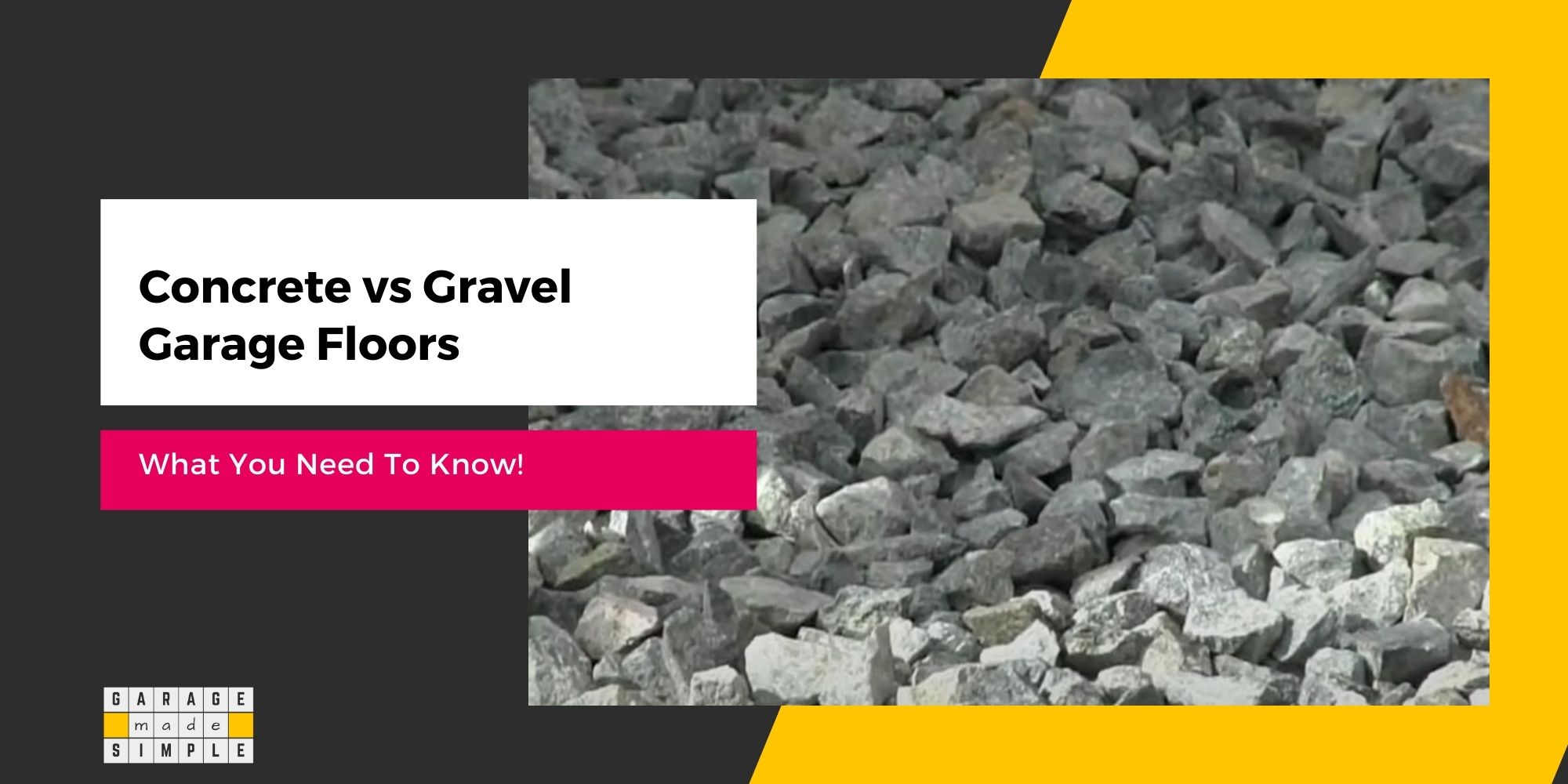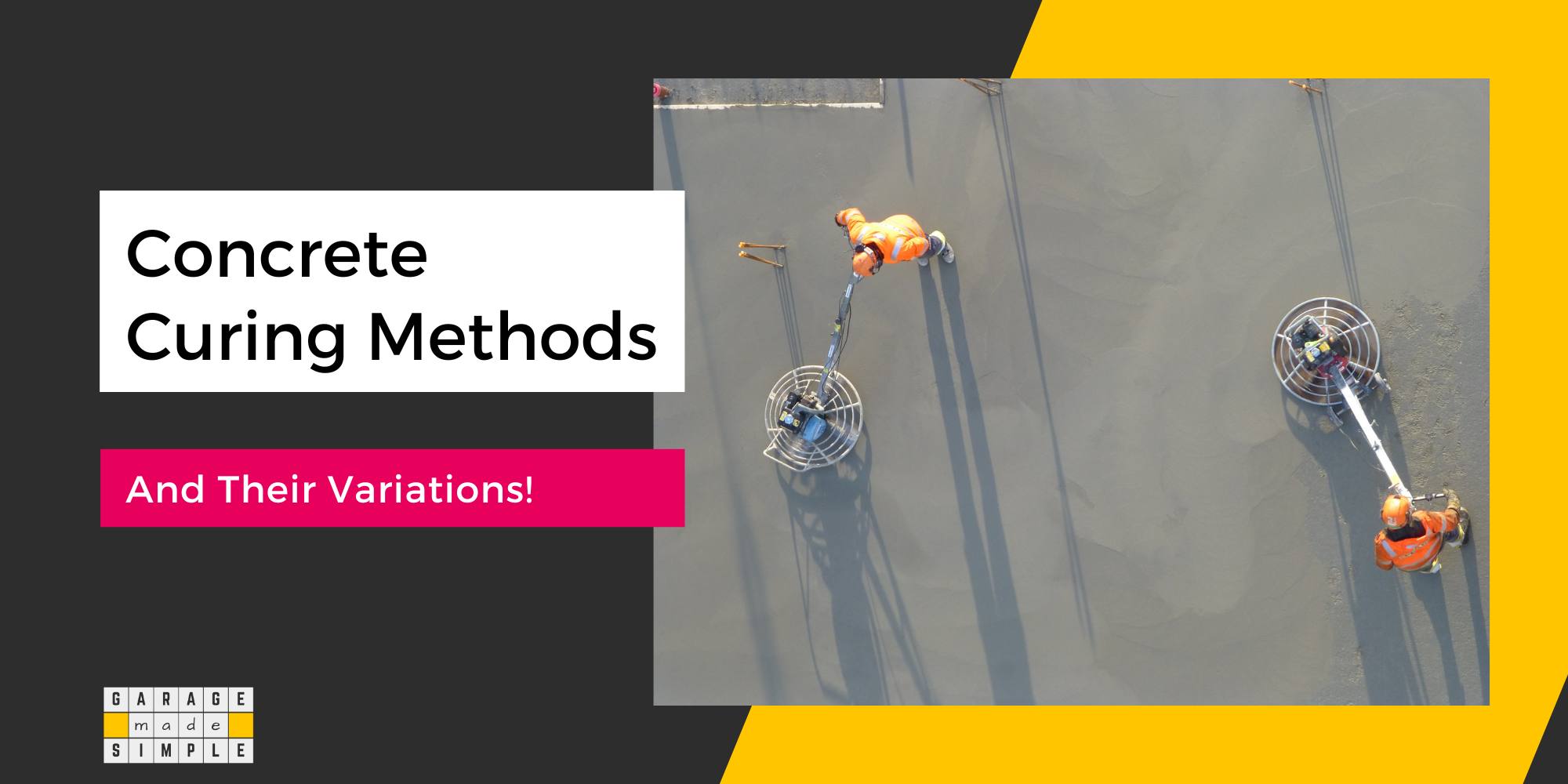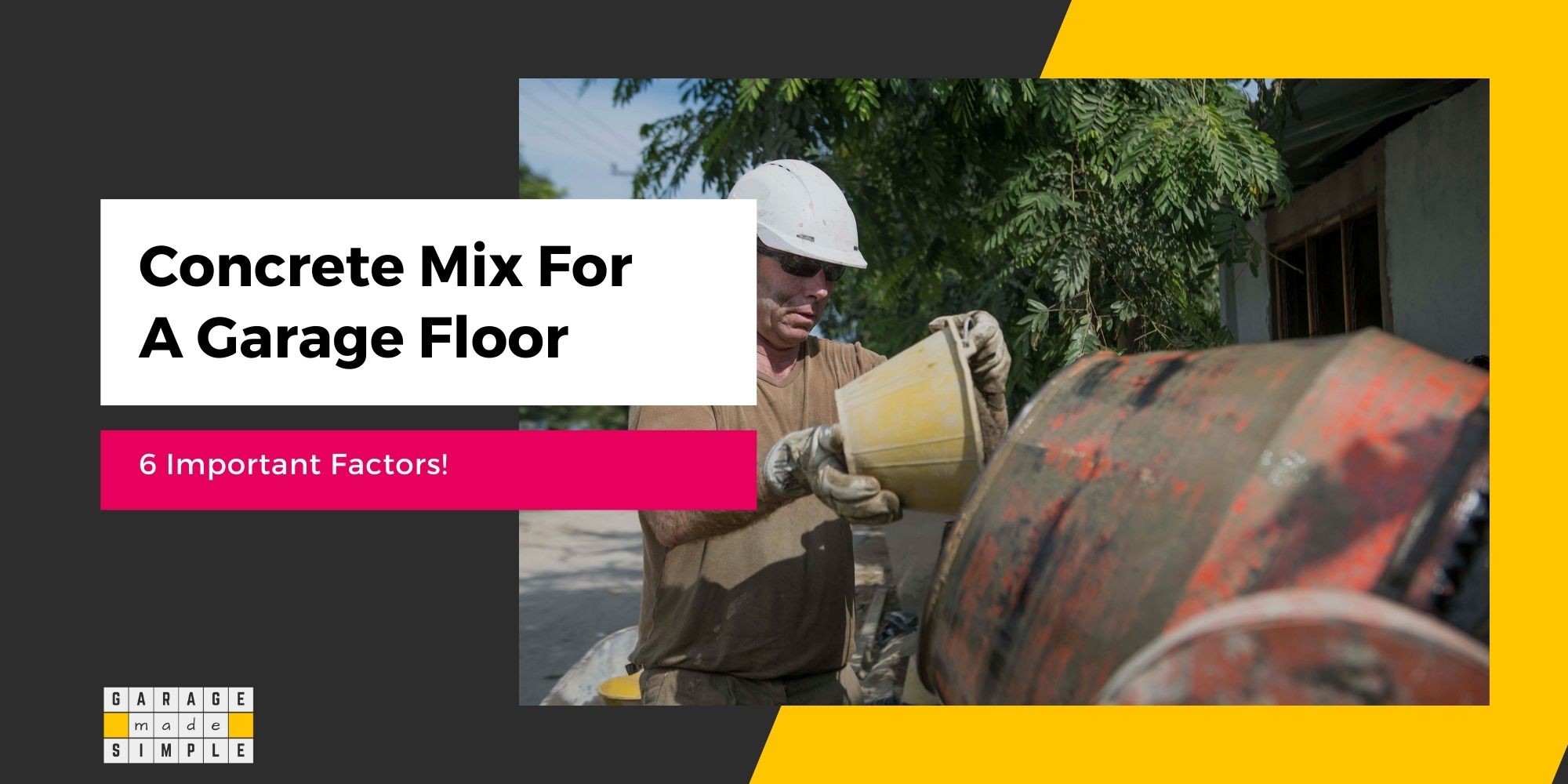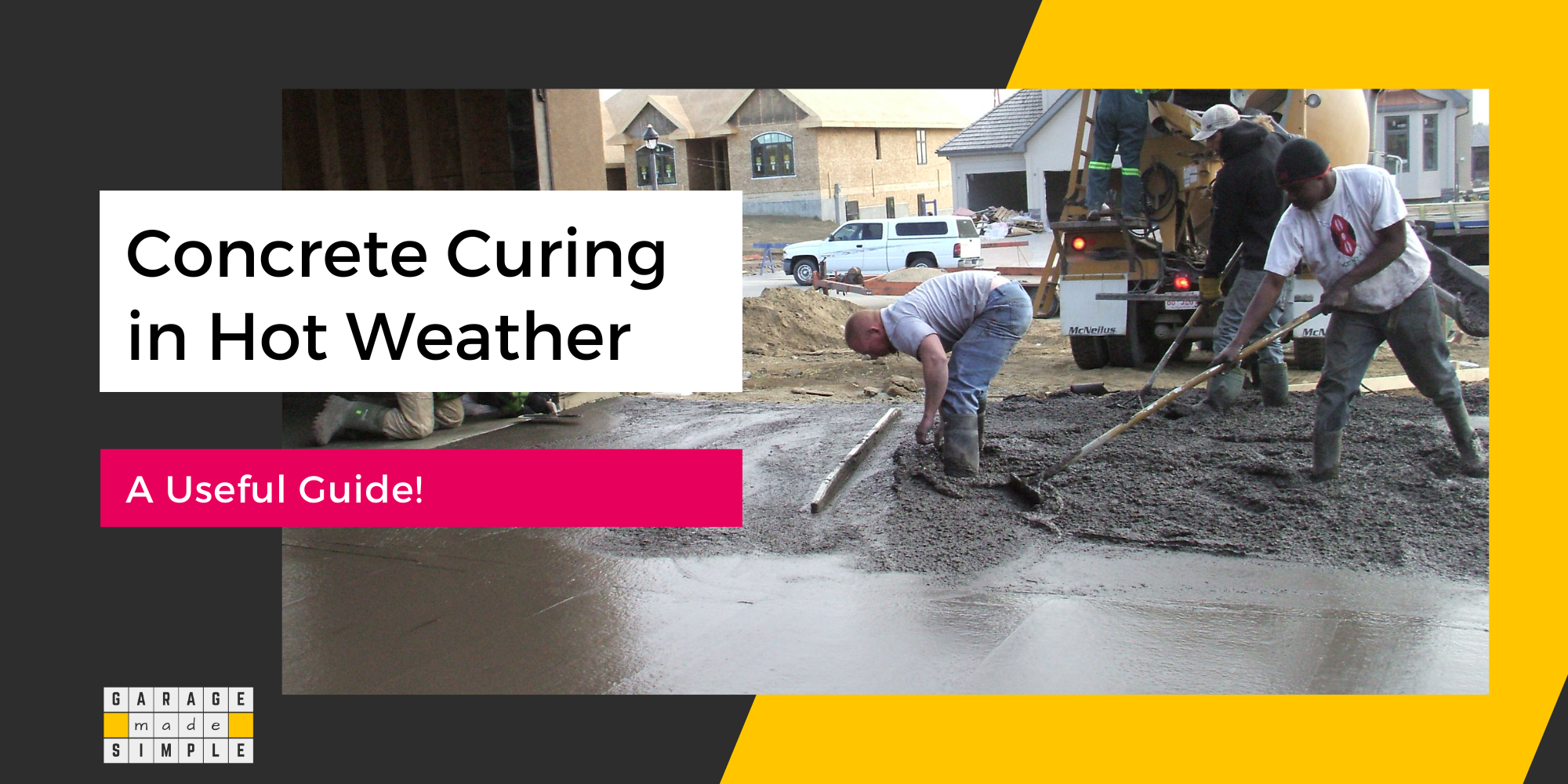Concrete Curing Time vs Concrete Drying Time: Helpful Guide
garagemadesimple.com is a participant in the Amazon Services LLC Associates Program, an affiliate advertising program designed to provide a means for sites to earn advertising fees by advertising and linking to Amazon.com . The website is also an affiliate of a few other brands.
If you are in the process of building a new garage then you may well ask, what is 4 inch concrete curing time? You may not realize it but in fact you have asked a trick question.
Concrete curing time isn’t tied to the thickness of the slab; in other words the 4 inch concrete curing time is pretty much the same as 6 inch concrete curing time or 8 inch concrete curing time. It is typically 28 days but can vary depending on curing conditions such as temperature and relative humidity.
On the other hand the question, what is 4 inch concrete drying time? is not a trick question.
Concrete drying time does depend on the thickness of the slab. As a rule of thumb, concrete typically takes about 28 days per inch of thickness to dry fully. This drying process involves the evaporation of excess moisture from the concrete. (source: Wagner Meters)
In effect a 4 inch thick concrete slab will take 28 days to cure but around 4 months to dry fully.
To fully appreciate the above short answers, you need to understand the concrete curing process and the concrete drying process. Let’s get into it!
Concrete Curing Time vs Concrete Drying Time (In a Nutshell!)
The terms “concrete curing” and “concrete drying” may be used interchangeably, but, in fact, they are distinct phases. Both start as soon as the concrete mix is poured but follow different timelines and have different results.
Concrete Curing:
Curing initiates immediately after pouring. The concrete curing process is a chemical reaction between water and cement, forming a sturdy bond. While the majority of curing occurs within the first 28 days, the concrete continues to strengthen indefinitely.
The Concrete Curing Process is a chemical reaction between water and Portland cement called “hydration”. During the concrete curing process water and cement react to form a web-like crystalline structure that encapsulates the aggregates to give concrete its strength.
Factors Influencing Concrete Curing Time:
- Type of Concrete Mix: The composition of the concrete mix significantly impacts curing time. Certain additives or admixtures may accelerate or decelerate the curing process.
- Temperature and Humidity: Curing is optimal within a specific temperature and humidity range. Warmer temperatures expedite curing, while cooler temperatures may slow it down. Maintaining adequate humidity levels helps prevent the concrete from drying out too quickly, ensuring proper hydration and strength development.
There are 3 practical ways in which a concrete slab on grade for a new garage can be cured. These are water curing, dry (air) curing and chemical curing.
Concrete Drying:
Concrete drying, on the other hand, refers to the evaporation of excess moisture from the concrete. The process of concrete drying also commences right after the pour and continues indefinitely. Even after curing, residual water remains within the slab, needing time to dissipate.
This can take months, depending on factors like, slab thickness, ambient temperature, humidity levels, etc.
Factors Influencing Concrete Drying Time:
- Concrete Slab Thickness: The concrete slab thickness directly affects the concrete drying time. As a rule of thumb, concrete typically takes about 28 days per inch of thickness to dry fully.
- Grade Conditions: Apart from the initial water in the concrete mix, water seepage from the grade below has a huge impact on the concrete drying time. Usage of vapor barrier can help in reducing the water seepage from the grade below.
- Water-Cement Ratio: The amount of water used in the mix directly affects drying time. A higher water-cement ratio leads to longer drying periods but enhances workability, while a lower ratio yields a stronger mix but makes handling more challenging.
- Ambient Temperature and Humidity: Ideal conditions for concrete drying fall within a temperature range of 50°F to 80°F, coupled with a relative humidity level between 40% and 60%. Extreme temperatures or humidity levels can reduce or accelerate concrete drying time.
The Chemistry Behind Concrete Curing Time
Concrete curing is a chemical process that involves hydration, where water reacts with cement to form a crystalline structure, resulting in the hardening and strengthening of the concrete.
The primary chemical reaction responsible for this process is the hydration of Portland cement, the most common type of cement used in concrete. The main components of Portland cement are calcium silicates, primarily tricalcium silicate (C3S) and dicalcium silicate (C2S).
When water is added to Portland cement, it triggers a series of hydration reactions. The most important reaction is the formation of calcium silicate hydrate (C-S-H) gel, which is the primary binding agent in concrete. This reaction can be represented by the following simplified chemical equation:
[2C_3S + 6H → C_3S_2H_3 + 3CH]
In this equation, (C_3S) represents tricalcium silicate, (H) represents water, (C_3S_2H_3) represents calcium silicate hydrate gel, and (CH) represents calcium hydroxide (also known as Portlandite).
Another important reaction during hydration is the formation of calcium hydroxide:
[C_3S + 6H → C_3S_2H_3 + 3CH]
The C-S-H gel and calcium hydroxide contribute to the binding and hardening of the concrete matrix. As hydration progresses, the concrete gradually gains strength and becomes more durable.
Adequate concrete curing time is essential for the hydration reactions to occur effectively. An important point to note is that the hydration reactions take place in the entirety of the concrete slab at the same time. This is the reason concrete curing time is not dependent on slab thickness.
The Physics Behind Concrete Drying Time
Concrete drying, on the other hand, is a physical process driven by the movement of water molecules from within the concrete matrix to the surface and their subsequent evaporation from the surface.
The concrete mass has capillaries, which are tiny channels or pores within the concrete that allow water to move through them due to capillary action. This action occurs because of the attraction between water molecules and the surface of the capillary walls. The capillary action results in water being drawn upward against gravity.
Vapor pressure is a measure of the tendency of water molecules to escape from the liquid phase and enter the air as vapor. For concrete to dry, the vapor pressure at the surface of the concrete must exceed the ambient vapor pressure for evaporation to occur.
Factors such as temperature, humidity, and airflow influence vapor pressure and, consequently, the rate of drying.
As water evaporates from the concrete surface, it creates a moisture gradient within the material, with higher moisture levels deeper within the slab. This gradient drives the movement of water molecules towards the surface, where they can evaporate into the surrounding environment.
Concrete drying involves the evaporation of water in the concrete mass from the exposed concrete slab surface. Water, within the concrete mass, has to travel through the slab thickness to reach the concrete surface. Needless to say concrete drying time is almost directly related to the slab thickness.
When Can I Use My Garage Concrete Floor?
Now don’t get me wrong! While it may seem that the 4 inch concrete drying time is 4 times longer than the 4 inch concrete curing time, it does not mean that you have to wait 4 months before using your garage concrete floor.
The concrete curing process and the concrete drying process are never ending.
However, concrete is considered to be fully cured after 28 days as it achieves 90% of its ultimate strength. Most concrete topical sealers and coatings require a moisture content of 6% or less in the concrete slab before they can be applied. This is typically achieved in 90 days.
Development of Concrete Strength with Time
In reality the time lines are as under:
| Time (After Pour) | Activity |
| 24 Hours | Still not hard enough to support any weight without indentation. |
| 48 Hours | Foot traffic is OK. |
| 7 Days | You can drive and park on it. |
| 28 Days | Considered fully cured (achieves 90% of potential strength). |
| 90 Days | Moisture content likely to be less than 6%. Sealers & Coatings can now be applied. |
Thank you very much for reading the post. I do hope you found it informative and useful.






